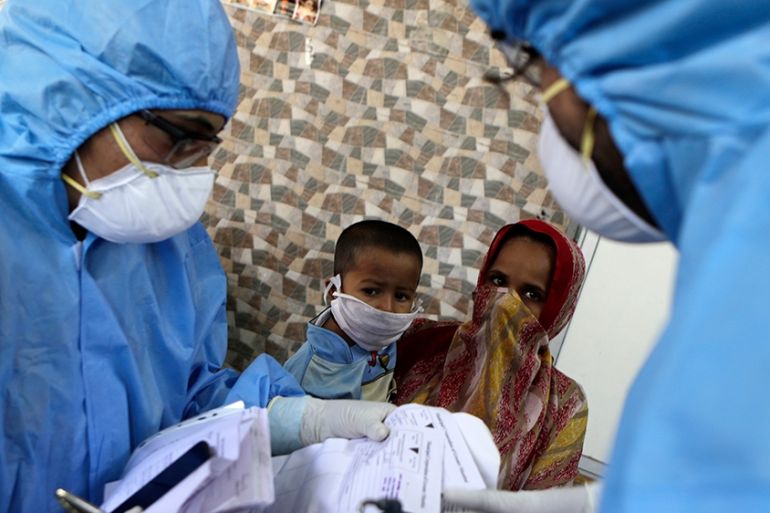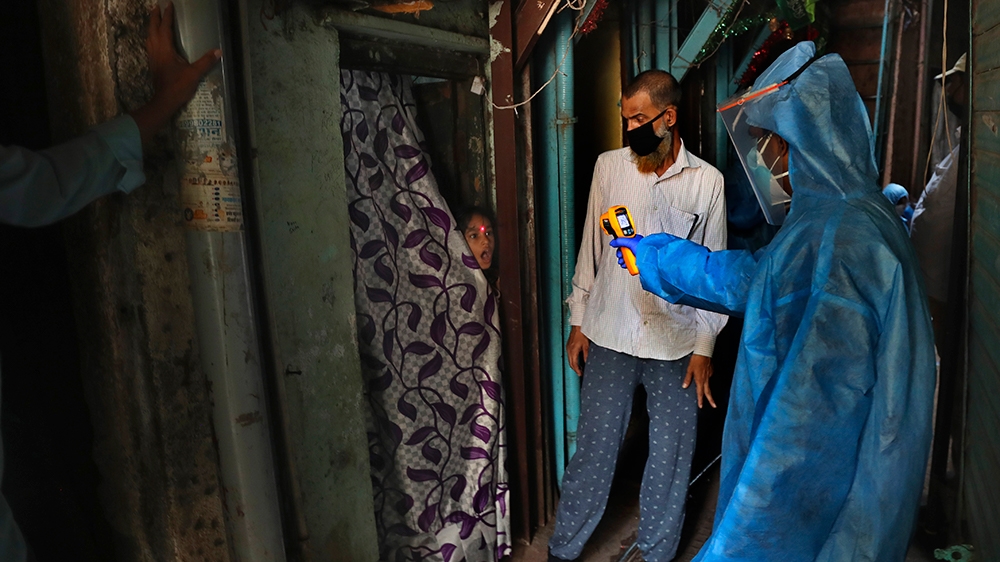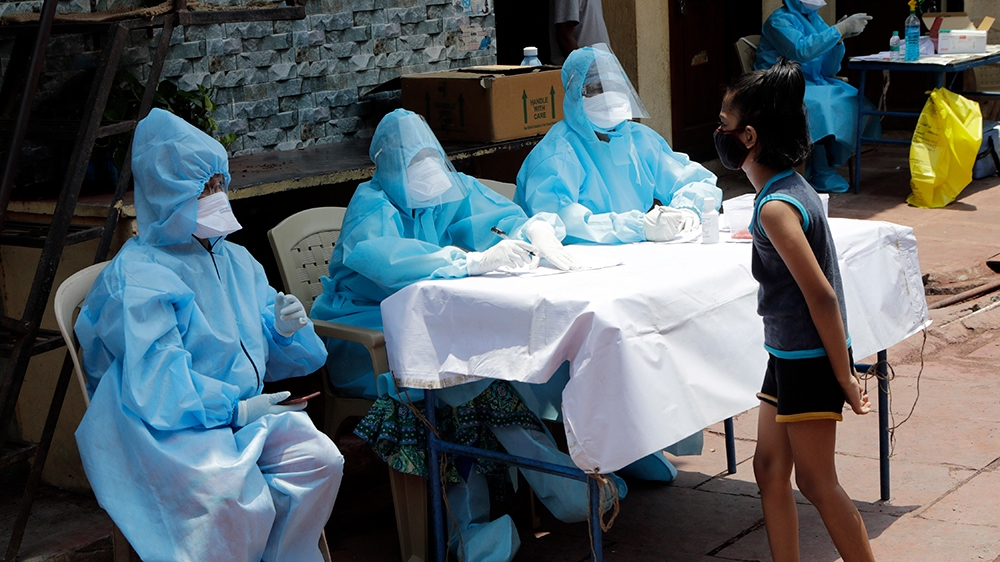Mumbai coronavirus cases spike as India begins to ease lockdown
Health officials struggle to contain the spread of the virus in financial hub, complicating India’s recovery.

As Indians await details of a huge coronavirus relief package Prime Minister Narendra Modi has announced to jump start the economy, the outbreak in the financial capital of Mumbai and elsewhere in Maharashtra state is starting to overwhelm hospitals and slums, complicating any economic recovery plan.
About a third of India’s 71,865 confirmed virus cases, and nearly 40 percent of its 2,415 deaths, have been reported in Maharashtra, the coastal state in the centre of the country that is home to Bollywood, a huge agriculture industry and India’s largest stock market.
Keep reading
list of 3 itemsConcerns after Mumbai’s Dharavi slum reports COVID-19 cases
Alarm as medics at Mumbai hospital infected with virus
The Sensex has sunk about 25 percent from its year-to-date high in January.
Health experts have praised Modi’s government for enforcing a stringent weeks-long lockdown that has helped the nation of 1.3 billion so far avoid the kind of catastrophic rates of illness and death that have beset the United States, Britain and elsewhere.

‘Cost of the lockdown’
But as India’s lockdown restrictions are eased, whether the country can steer its economy back on track will largely depend on how Maharashtra rebounds, experts say.
“It’s a huge impact,” Gurcharan Das, the former head of Procter & Gamble in India, said of the state. “I think the default position should be to open, and you only lock down by exception, because eventually I fear that the cost of the lockdown will be far greater in lives even than the disease.”
India’s lockdown, imposed on March 25, is set to at least partially end on May 18. Some restrictions on manufacturing, agriculture and self-employment were lifted on May 4 to ease the burden on the poor and informal sector workers who comprise the majority of India’s workforce.
Indian Railways also partially reopened to run special trains carrying migrant workers stranded in the lockdown who fled India’s big cities, including Mumbai, for their village homes.
At least some of the passengers carried the coronavirus with them, infection spikes in the states of Bihar and Orisha corresponding with their arrival show.
In an address on Tuesday night, Modi said the government would spend more than $260bn to revive the economy. The government described some details of the package, including income tax cuts, liquidity injections for cash-strapped companies and government-backed bank loans.
It also said it would bar foreign companies from competing in bidding for government contracts of up to $26m, in a nod to the self-reliance and protectionist policies outlined in Modi’s address.
Ritu Dewan, vice president of the New Delhi-based Indian Society of Labor Economics, said the government should do more to address the needs of India’s poor.
“People are out of money, what about them? Where will they go? People need cash at this moment,” she said.

Signs of distress
Places like Maharashtra are showing signs of distress.
The state government has ordered all private hospital doctors to spend at least 15 days treating COVID-19 patients at public hospitals, where infection rates among healthcare workers are growing.
The government also released half of its inmate population amid outbreaks in prisons.
And health officials are struggling to contain the spread of the virus in Mumbai, one of the world’s most densely populated cities.
Anushaa Vijay, 31, an architect in Mumbai, said the pandemic has had a transformative effect.
“The virus has bought the liveliest city I know of to a standstill,” she said.
But the narrow lanes of Dharavi, one of Asia’s biggest slums, are still crowded. Prashant Pawar’s neighbour, Mukund Patil, a 58-year-old diabetic street food vendor, developed a mild fever earlier this month. Two days later, he tested positive for the virus. Pawar tested negative.
Pawar accompanied Patil in the ambulance to Lokmanya Tilak Municipal General Hospital. By the time doctors could attend to him, Patil was dead.
The scenes inside the hospital left Pawar distressed.
“Its indoors were full of people. Very few people were wearing masks,” Pawar said, adding that “at times I saw more than one patient being rested on a single bed”.
The hospital, where many of the hundreds of COVID-19 patients from Dharavi have been treated, has been under scrutiny since a video emerged showing four bodies shrouded in black plastic lying next to virus patients.
A member of the hospital staff, Dr Avinash Saknure, said health facilities were “overstretched”. “We are doing our best with what we have,” he said.